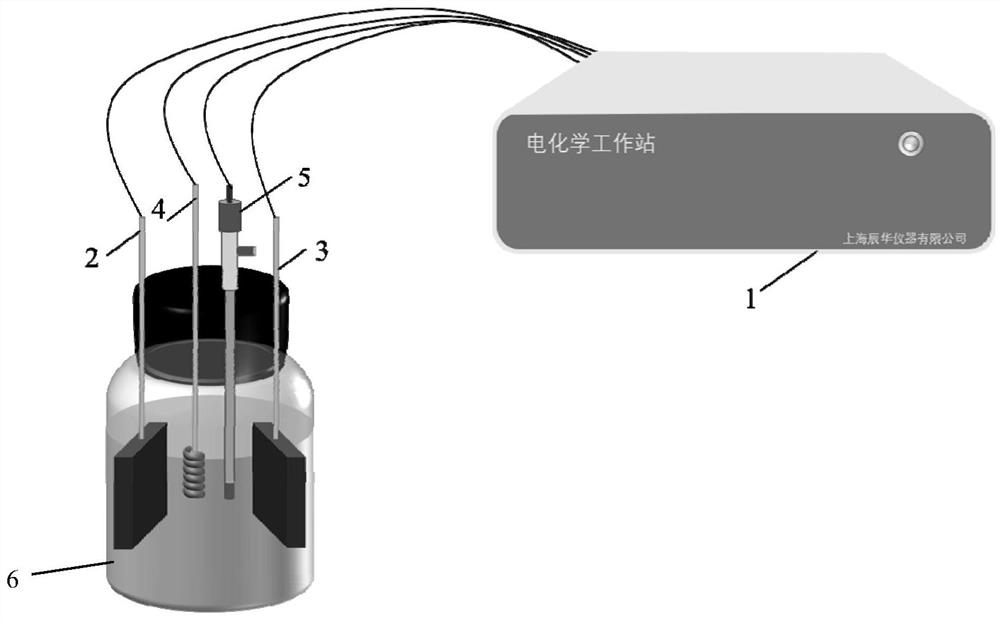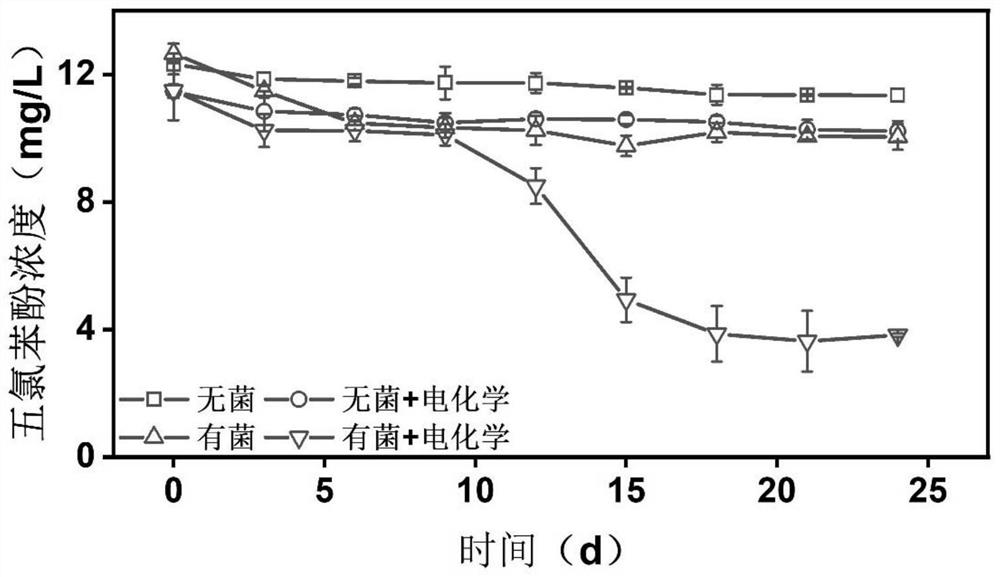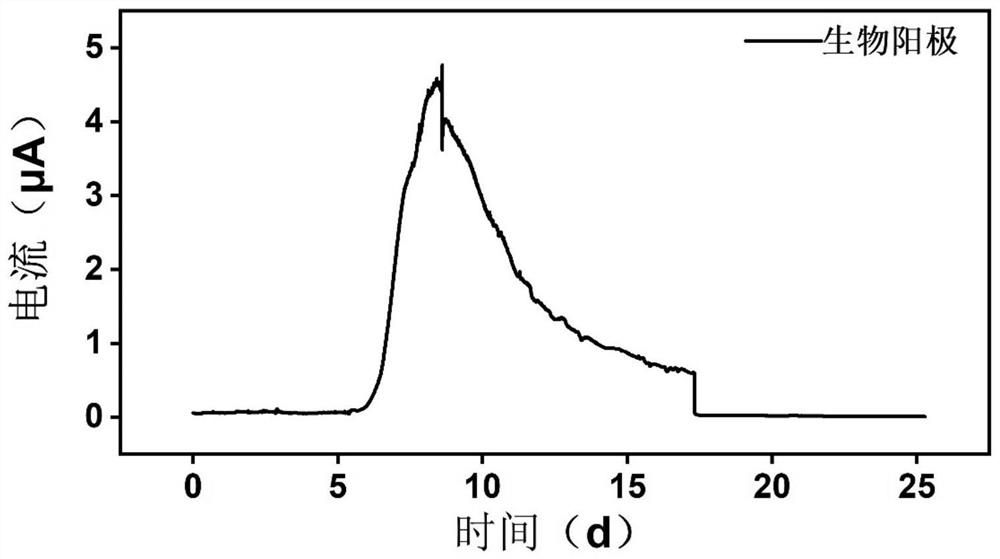Bioelectrochemical device and method for mineralizing and degrading organic chlorine
A bioelectrochemical and organochlorine technology, applied in chemical instruments and methods, electrochemical biocombination treatment, biological water/sewage treatment, etc. Achieve complete degradation, reduce environmental toxicity, and shorten the degradation cycle.
- Summary
- Abstract
- Description
- Claims
- Application Information
AI Technical Summary
Problems solved by technology
Method used
Image
Examples
Embodiment 1
[0042] A bioelectrochemical method for organic chlorine mineralization degradation, comprising the steps of:
[0043] (1) Construct a bioelectrochemical device for mineralization and degradation of organochlorine
[0044] A 120mL serum bottle was used to construct a single-chamber bioelectrochemical reaction chamber, and a 7cm 2 carbon cloth, titanium wire and saturated calomel electrode (SCE) as working electrode, counter electrode and reference electrode (such as figure 1 shown). There are two working electrodes, and the constant potentials of the cathode and anode are controlled by a multi-channel constant potential controller to be -500mV and +200mV vs. SCE;
[0045] (2) Polluted water body and operating parameters
[0046] Sewage with an initial PCP concentration of about 12mg / L was inoculated in a bioelectrochemical reaction chamber for degradation experiments, and incubated at room temperature (25-28°C) in the dark. This treatment is abbreviated as "bacteria + electr...
PUM
 Login to View More
Login to View More Abstract
Description
Claims
Application Information
 Login to View More
Login to View More - R&D
- Intellectual Property
- Life Sciences
- Materials
- Tech Scout
- Unparalleled Data Quality
- Higher Quality Content
- 60% Fewer Hallucinations
Browse by: Latest US Patents, China's latest patents, Technical Efficacy Thesaurus, Application Domain, Technology Topic, Popular Technical Reports.
© 2025 PatSnap. All rights reserved.Legal|Privacy policy|Modern Slavery Act Transparency Statement|Sitemap|About US| Contact US: help@patsnap.com



